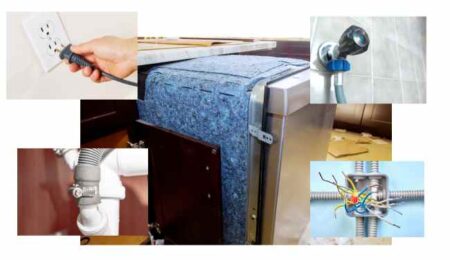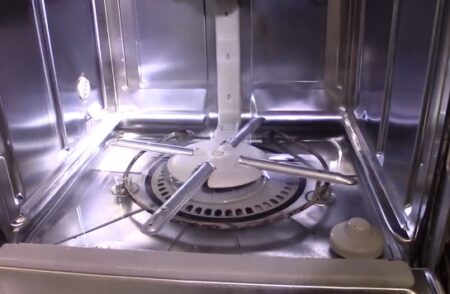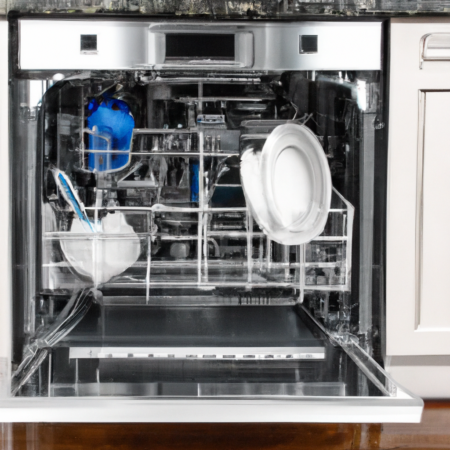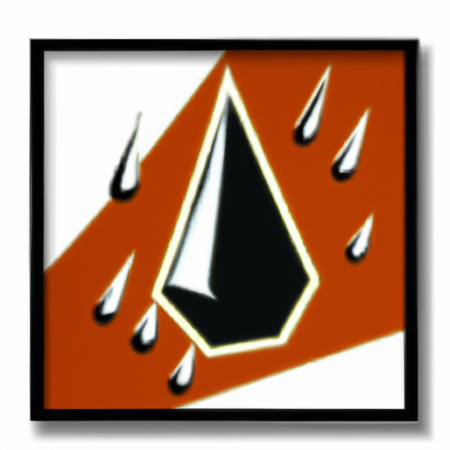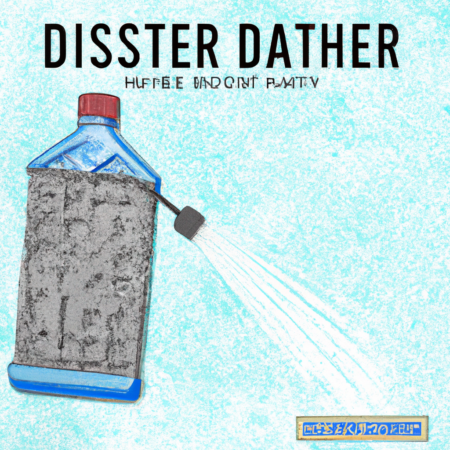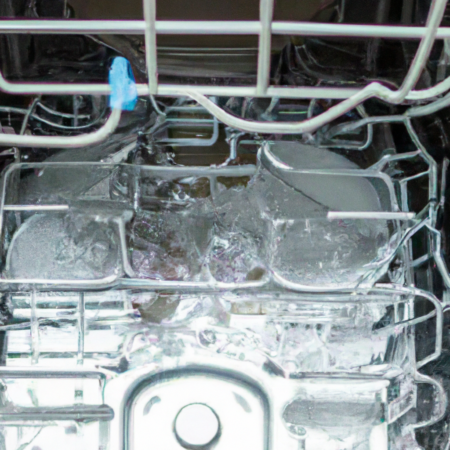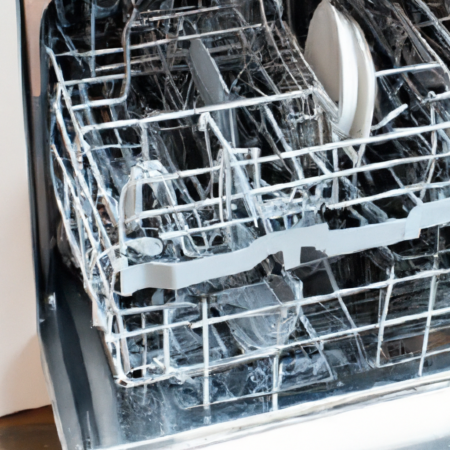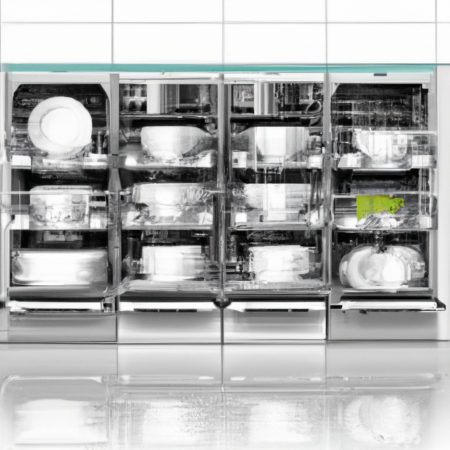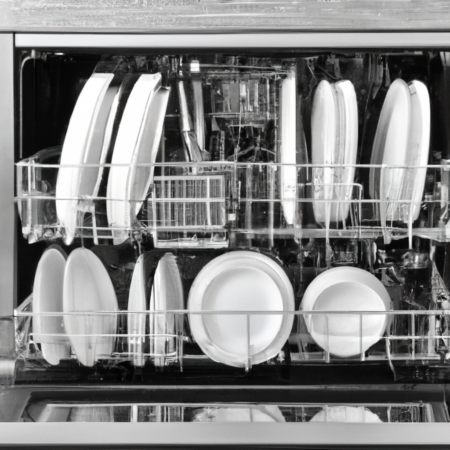Hard water contains high concentrations of calcium and magnesium, tap water can be hard or moderately hard in nature which is proven to be a nightmare for metal surfaces. Dishwashers are no exception.
The efficiency of dishwashers is greatly inhibited by hard water. Let’s discuss how to ensure the efficiency of your dishwasher.
How to clean a dishwasher? Descale your dishwasher to get rid of the buildup and residue. Descaling is the process of cleaning metal generally used to remove residue of limescale. Limescale is a hard, whitish deposit caused by hard water.
- What is Descaling
- Signs When You Need to Descale Dishwasher
- Easy Ways to Descale Dishwasher
- Descale Dishwasher With Baking Soda
- Remove Limescale From Your Dishwasher With Lemon Juice
- Decalcifying Dishwasher With Vinegar
- Clean Your Dishwasher With Borax
- Remove Hard Water Build-Up With Cleaning Mixture
- Descale Your Dishwasher With Bleach
- Clean Your Dishwasher With Hydrogen Peroxide
- Remove Limescale With Descaling Solution
- How to Clean Dishwasher Exterior’s
- How to Clean Dishwasher Interior’s
- How to Clean Dishwasher Filter
- How to Clean Dishwasher Spray-Arms
- How to Add Rinse-Aid in Dishwasher
- How To Prevent Hard Water Build-Up in Dishwasher
- Most Frequently Asked Questions
What is Descaling
Descaling is simply the process of removing stubborn deposited minerals and, limescale from metal. Limescale is a consequence of hard water, it is a white, chalky layer that inhibits or compromises the function of a machine or a certain part of it.
Signs When You Need to Descale Dishwasher
Do your dishes not appear as immaculate as they did before after completing the wash cycle? If yes, then it is time to descale your dishwasher. One prominent sign is the appearance of a white stubborn cast on your dishes that don’t seem to get off.
You’d find this cast or crust at the bottom of your dishwasher too. Another sign is foul odors and dirty dishes. Keep reading to find out how to descale your dishwasher.
Easy Ways to Descale Dishwasher
To keep your dishwasher clean and sanitized, you should descale it. Descaling is an easy process to get rid of any calcium residue, hard water stains and, foul smells from your dishwasher. Descaling will also help improve the efficiency of your dishwasher.
Depending upon the quality and content of your tap water, you should descale your dishwasher at least once to thrice times a year. Once is enough for moderately hard water while for very hard water, you should descale your dishwasher at least thrice a year.
Descaling your dishwasher will make it as good as new. We’ll tell you some different and easy ways, keep reading to find out!
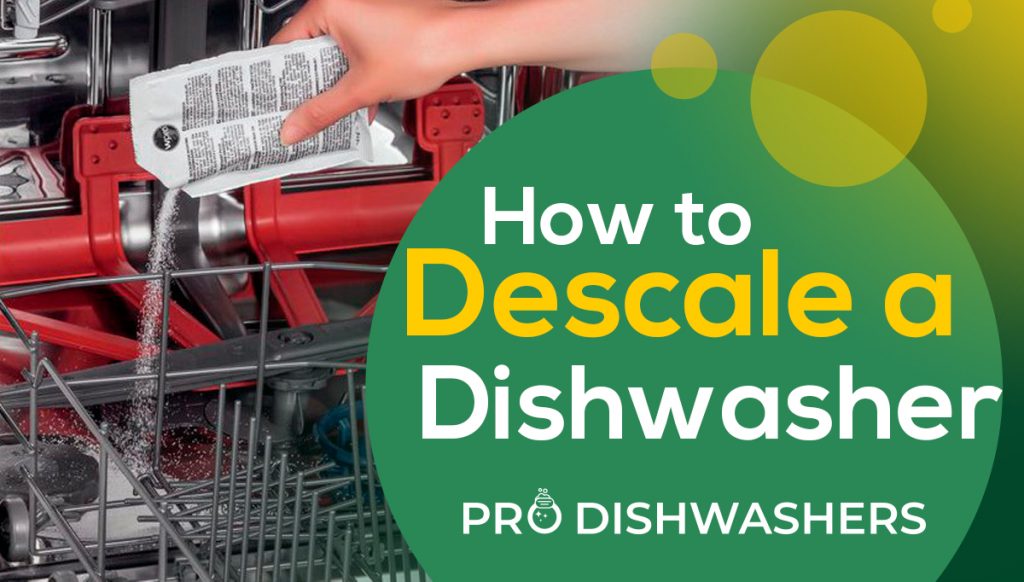
Descale Dishwasher With Baking Soda
Baking soda has always proved to be a great cleaning agent, especially in the kitchen, due to its alkaline properties. The best thing is, it is always lying around in your kitchen cupboard!
To prepare the descaling solution, mix baking soda in warm water and pour it into a spray bottle. Remove the trays of your dishwasher and spray them with the mixture. Scrub the surface with a sponge or a toothbrush.
Run a normal wash cycle to get rid of limescale and excess of the baking soda mixture. And voila, your dishwasher should get rid of any white casts and foul odors!
Another way to descale your dishwasher using baking soda is to sprinkle the powder inside the dishwasher and scrub it with a sponge. Run a normal wash cycle and drain.
Remove Limescale From Your Dishwasher With Lemon Juice
Is there anything lemon juice can’t fix? With its citric nature, lemon juice fights off calcium residue within minutes.
Pour lemon juice into a container and place it in your dishwasher. Run a wash cycle and check for any calcium residue or hard water stains.
Scrub the dishwasher using a sponge and wipe. Run another wash cycle to ensure cleanliness.
Decalcifying Dishwasher With Vinegar
Vinegar is acidic and so it is effective against hard water residue. Not only does it remove calcium residue, but it also fights off stains and odors.
How to use vinegar to descale the dishwasher? Mix vinegar with hot water and pour it into a jar or glass. Place the jar filled with the mixture on the bottom rack of your dishwasher.
Run a normal wash cycle, wait a few minutes and remove the jar. Drain the dishwasher to make it squeaky clean.
Clean Your Dishwasher With Borax
Borax is a great cleaning agent; it is also the main component of detergents. Mix borax with hot water in a container and place it in your dishwasher. Run a hot wash cycle, scrub the dishwasher and, drain.
Remove Hard Water Build-Up With Cleaning Mixture
One of the best homemade cleaning mixtures is that which consists of baking powder and vinegar. Mix baking powder and vinegar in hot water and transfer this mix into a spray bottle.
Spray the interior of your dishwasher with this mixture and scrub with a toothbrush until satisfied. Run a normal wash cycle and drain.
Descale Your Dishwasher With Bleach
Bleach is great to clean and kill germs. It visibly cleans any surface. Mix bleach with water, apply this mixture to the interior of your dishwasher and, scrub using a sponge.
Wipe off excess bleach run a normal wash cycle and drain. Run another wash cycle to get rid of any residue.
Clean Your Dishwasher With Hydrogen Peroxide
Hydrogen peroxide is one of the best nontoxic disinfectants. Mix 3/4th cup hydrogen peroxide with water and apply it to an empty dishwasher.
Wait a few minutes and run a normal wash cycle to clean and disinfect your dishwasher.
Remove Limescale With Descaling Solution
There are plenty of dishwasher descaling liquids available in the market. They can be quite effective against limescale and hard water stains. Pour the solution in the wash tank or as advised on the descaling liquid.
Run a wash cycle with the descaling solution. After the completion of the cycle, check the interior of your dishwasher. If it doesn’t appear descaled, run another cycle with the descaling agent.
Drain the dirty water and replace it with fresh water.
How to Clean Dishwasher Exterior’s
To clean the exterior of your dishwasher, take a clean cloth and dampen it with water. Clean the exterior of your dishwasher with this wet cloth. Then apply soap or vinegar onto the dishwasher and scrub it with a cloth. Wipe it off with a clean cloth. You can also use various appliance cleaners available in the market.
How to Clean Dishwasher Interior’s
To clean the interior of your dishwasher, remove the racks, rotor, drainer and empty the dishwasher completely. Wipe the entire body with a clean, damp cloth.
Apply dishwasher cleaning solution inside the dishwasher with the cloth, scrub it with a toothbrush. Wait for a few minutes and wipe it off with another dampened cloth. The interior of the dishwasher will end up immaculate.
How to Clean Dishwasher Filter
Did you know that the dishwasher filter needs to be cleaned from time to time? If your dishes do not appear clean then maybe your dishwasher filter needs to be cleaned.
The filter is located on the bottom of your dishwasher’s interior. Remove the bottom rack and locate the filter. Take the filter out, no tools are required for that.
Rinse the filter with hot water, apply a small amount of dishwashing soap on the filter and, scrub. Use a soft toothbrush or sponge to scrub the filter. Rinse the filter with hot water. Place the clean filter back once it has dried.
How to Clean Dishwasher Spray-Arms
The main function of spray arms is to shower and shoot hot water at high pressure in order to scrub the dishes. It makes up the upper and lower part of your dishwasher. If the spray arms are clogged, they will affect the efficiency and working of your dishwasher and your dishes will not be clean after being washed in the dishwasher. To ensure the smooth working of your dishwasher, you need to clean its spray arms.
Remove the spray arms from the dishwasher to unclog them. No tools are required to remove it. You will need a wire to clean the holes of the spray arms. Take a wire and poke the holes of the spray arms until all of them are unclogged and the spray arm is clean.
Place the spray arms in hot water mixed with vinegar to make sure that any food residue or obstruction is removed. Once dried completely, put them back inside the dishwasher.
How to Add Rinse-Aid in Dishwasher
As indicated by its name, Rinse aid is supposed to help clean the dishes in the dishwasher. Rinse aid improves and enhances the quality of the dishwasher. By using rinse aid the dishes will be cleaner, more sparkling and they will dry better. It also protects and prevents glassware from chipping or cracking.
How does rinse aid work? Rinse aid reduces the surface tension of water being used in the dishwasher. It flattens water drops out which greatly helps in drying the dishes without leaving any traces. The streaks of water on glassware also disappear due to rinse aid as the water evaporates way faster.
To add rinse aid in your dishwasher, locate the rinse aid dispenser which might be present on the door of your dishwasher. Lift the flap and pour rinse aid in the dispenser, avoiding overfilling. Secure the flap of the dispenser tightly.
Adjust the rinse aid level according to the quality of water being used, raise the rinse aid level if water is too hard. When your preferred rinse aid level is achieved, press the start button to save settings. If foam lathers on your dishes, decrease the rinse aid level
How To Prevent Hard Water Build-Up in Dishwasher
All appliances need extra care to keep working for a long time. Dishwashers also need a little extra care to keep them running smoothly. To prevent damaging the dishwasher, you need to prevent hard water.
Use a rinse aid in your dishwasher to keep it streak and build-up free. Install water softeners to decrease calcium and magnesium levels in the water. Descale your dishwasher yearly and give your dishwasher a regular vinegar rinse to get rid of limescale, food, or mineral deposits.
Hard water build-up, food residue and, mineral deposits clog the dishwasher and slow its function down. They prevent it from cleaning your dishes to perfection.
By taking care and checking these factors regularly, your dishwasher runs smoothly and happily.


